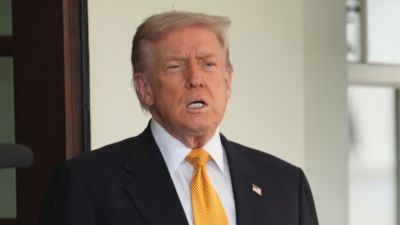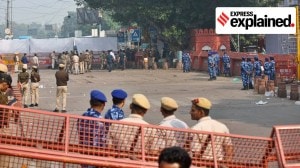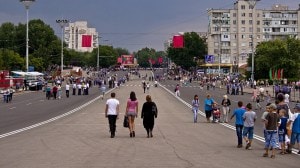As NCP leaders break down over Sharad Pawar’s resignation, echoes of a Congress episode
After Rahul Gandhi stepped down as Congress president following the 2019 LS polls defeat, party leaders refused to accept his decision and several even threatened to resign.
 Just as NCP leaders were seen crying and workers protesting, Congress leaders and party workers had risen up against Rahul Gandhi’s decision to resign as party president (Source: PTI)
Just as NCP leaders were seen crying and workers protesting, Congress leaders and party workers had risen up against Rahul Gandhi’s decision to resign as party president (Source: PTI) As dramatic scenes played out on Tuesday after Sharad Pawar announced he was stepping down as Nationalist Congress Party (NCP) president, it harked back to the impasse in the Congress following the Lok Sabha elections in 2019. Just as NCP leaders were seen crying and workers protesting, Congress leaders and party workers had risen up against Rahul Gandhi’s decision to resign as party president following the drubbing in the elections and even threatened to resign if he did not walk back on his decision.
On May 25, two days after the Congress’s massive defeat in the parliamentary elections, Rahul told the Congress Working Committee (CWC) that he wanted to step down as party president. Drawing from history, he told the CWC that in the past, the party had been helmed by a “non-Gandhi”. But the CWC unanimously rejected his offer but Rahul remained firm on his decision.
Sources who spoke to The Indian Express at the time said his mother Sonia Gandhi and sister Priyanka Gandhi Vadra tried to persuade him, insisting that he should listen to the CWC’s unanimous view, which was recorded in a resolution.
Sources said Rahul told the meeting that the party had regularly elected its presidents from “outside the Gandhi family” during the freedom struggle and after it. While one party leader told The Indian Express that he was just “recalling a fact in history”, many others said Rahul did not reveal his mind either way.
Sources said former Prime Minister Manmohan Singh, while asking Rahul to continue, suggested that the party should set up a committee to look into the reasons behind its defeat and suggest corrective action, including on organisational matters.
Congress insiders said P Chidambaram and some others — including Siddaramaiah and A K Antony — got “emotional” as they persuaded Rahul to change his decision. Many leaders told him that “we will also all resign”. “There was some theatrics,” said a young leader.
Three days later, a sulking Rahul avoided meeting top Congress leaders who reached his residence and had instead fielded his sister Priyanka to hold talks with them. Not relenting on his decision, Rahul, however, indicated he would continue in the post till a suitable replacement was found.
Congress leaders said at the time that Rahul was firm on his stand that a non-Gandhi should take over from him. This could take time and till then, party insiders said, Rahul was free to carry out the restructuring of the party, authorised by the CWC.
Then Delhi Congress president Sheila Dikshit, a staunch loyalist of the Nehru-Gandhi family, said: “It is difficult for us to come to any conclusion now. We are scared and extremely upset that this is happening. The final decision has to be taken only by him. All senior leaders in the party are also meeting individually to find ways to convince the party president.”
With the crisis showing no signs of ending, Congress allies Lalu Prasad Yadav and M K Stalin also stepped in, urging Rahul not to step down. The DMK said Stalin spoke to Rahul over the phone and “appealed to him to give up the idea of resigning as party president”. According to the DMK, Stalin told Rahul that he had won the hearts of the people though his party lost the election.
Lalu, on the other hand, made a public appeal. “Rahul’s offer to resign is suicidal. Opposition parties had the common goal to dislodge the BJP but failed to build a national narrative. The result in a particular election can never alter the reality in as diverse and plural a country as India,” he said in a post on Twitter.
But the suspense dragged on. On July 2, a day before he would finally make his announcement, approximately 200 Congress functionaries assembled at 24, Akbar Road – the AICC headquarters – in the morning for an indefinite sit-in, urging Rahul to change his mind. While the sit-in was called off by sundown, there was a sham suicide attempt, evoking memories from 2004 of former MP Ganga Charan Rajput getting atop a car outside 10, Janpath, pointing a pistol at his head, threatening to kill himself if Sonia did not agree to become the Prime Minister.
On July 3, Rahul finally put the rumours to rest. Taking responsibility for the disastrous performance of the Congress in the polls, he resigned as party president without naming a successor. He also asserted that the rank and file know that “at times, I stood completely alone” while taking on “the Prime Minister, the RSS and the institutions they have captured”.
In a four-page statement which he uploaded on Twitter, Rahul, who took charge of the Congress in December 2017, called for accountability in the party. “As president of the Congress party, I am responsible for the loss of the 2019 election. Accountability is critical for the future growth of our party. It is for this reason that I have resigned as Congress president,” he wrote.
On August 10, almost three months after Rahul first made his decision, the Congress named Sonia Gandhi its new interim Congress president. The decision, in what seemed to be a well-choreographed move, came after the CWC, following a marathon discussion for close to 12 hours, failed to arrive at a consensus on picking a non-Gandhi to head the party. Sonia continued in an interim capacity till Mallikarjun Kharge took over in October 2022 and ended up becoming the first non-Gandhi president of the Congress in nearly two and a half decades.





- 01
- 02
- 03
- 04
- 05


























